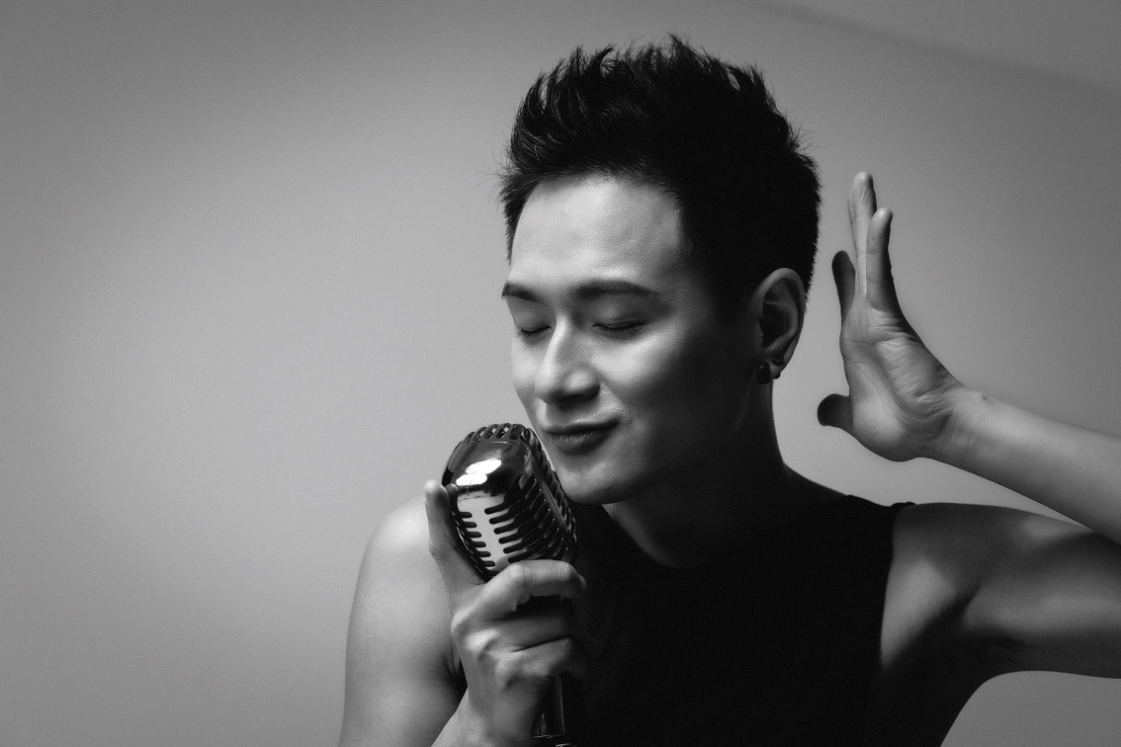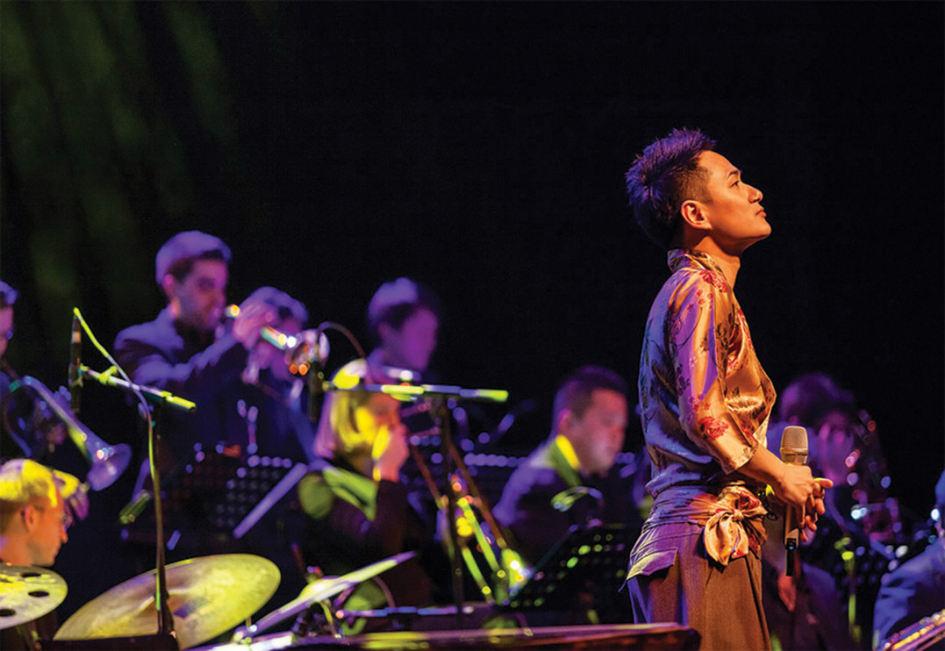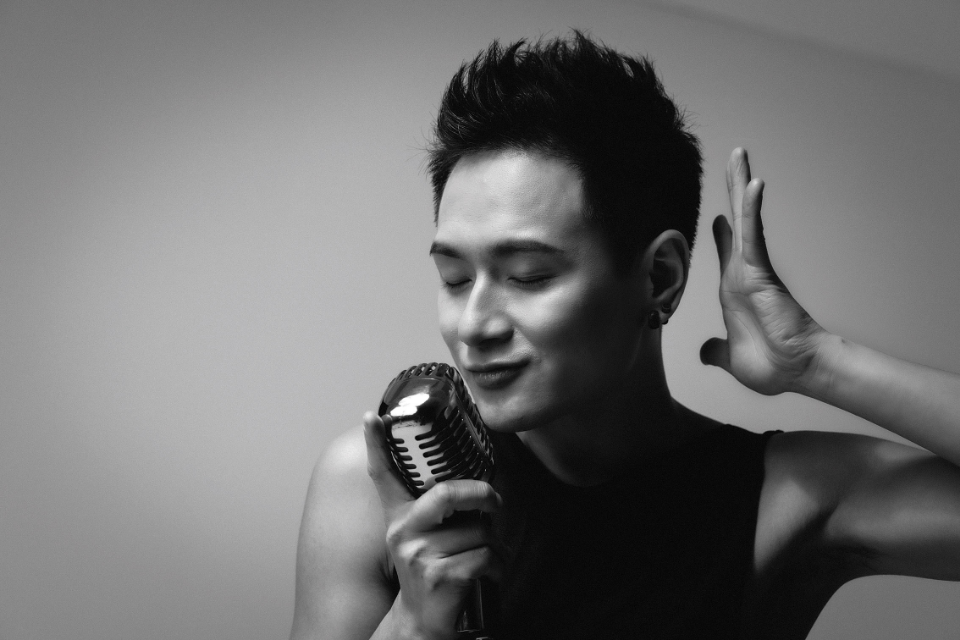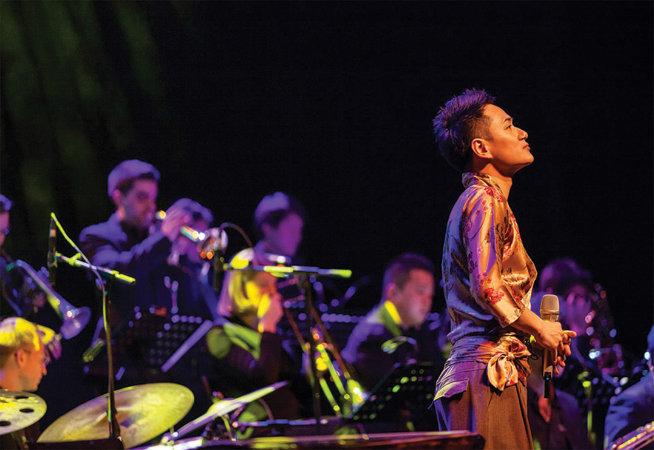Dubbed as China’s most exciting voice in jazz, Coco Zhao will delight CCM’s audience with a unique blend of western and Asian sounds. Ahead of his concert in Macao, we went looking for the roots and influences of a captivating star who, for the past decades, has been a main contributor for both the revival and promotion of Shanghai’s thrilling, exotic jazz scene.

Coco’s colourful notes
For most people, the word jazz brings to mind an imagery and sonic world immediately connected to the African-American musical heritage that from early last century immortalized numerous tunes, musicians and singers, from Louis Armstrong to Miles Davis, amongst many other icons. However, many other lesser-known jazz branches have since flourished and fused in various parts of the world, namely here, in China. Musicians like Coco Zhao have emerged as products of this continuos cultural blending and artistic reinvention such as the one that shaped jazz over the last decades. Born into a family of opera singers, the Shanghai based performer has initiated his musical studies at a very young age after joining the city’s conservatory. “My love for jazz began when I was a boy — 10 years old. I was listening to my parents’ albums and I heard Billie Holiday. I listened to her a lot. And when I started singing, I went back to that sound”, he once revealed. Years later, Zhao was studying classical Chinese and western music, at a time still not too easy for those in China eager for an education in jazz. New enthusiasts had no other choice but to self-cultivate with the help of videotapes and records or learning from friends. Then, in the mid-1990s, as western jazz became increasingly available in the country, Coco was finally allowed to fully devote himself to his passion. Besides some dedication to theory, the young vocalist gradually immersed himself, grasping rhythms and tempos, beginning to comprehend jazz’s universal language. Although he never had any formal vocal training, Zhao developed his singing skills in the shower, as he claims, which fortunately happened just in time so he could become part of Shanghai’s re-emerging scene.
Long considered as a city of beginnings, a cultural melting pot fusing east and west, Shanghai’s prominence as a jazz metropolis raised and faded between the 1920’s and the 1940’s. As China’s first big modern city in the beginning of the 20th century, it was also the country’s first urban scape where street lights, trams and department stores could be seen. Partially divided amongst a handful of foreign concessions, amidst the troublesome days of raids and political turmoil, the port city’s openness and development as a trade centre soon attracted a wave of intellectuals, adventurers and artists, both from China and the world over. Thriving with sailor and military bars, exclusive wealthy foreigner clubs and numerous “taxi dance halls” swarming with costumers looking for dancing escorts, Shanghai offered an exuberant, culturally fertile atmosphere. Along with its transformation into a dynamic publishing and media centre, the city became ground for a thriving recording industry. Cemented by the growing popularity of radio broadcasts, the newly created Asian circuit took off in the US west coast bringing with it a stream of African-American musicians that would establish a local jazz scene. Besides the intercontinental influences, the new Asian swing stemmed from a fusion of pop music created for movies and a hybrid of Chinese folk tunes. It was also the first time that Chinese musicians began fusing jazz and folk themes to create a mix of love and lush that some inner critics have depreciated as “yellow music”.
Despite some internal resistance, a very special atmosphere was gaining momentum, breeding ground for the rise of local stars. Among them were singers like Zhou Xuan, known as the “golden voice” and considered the greatest vocalist of that era, and Yao Lee, a radio performer discovered by Zhou herself, who would then become known as the “silver voice”. Back in the day, thanks to the popularization of radio hits and cinematic theme songs, the film and music industries fed one another, developing an interdependent relationship in the promotion of both record sales and movie tickets. A common love for musical experimentation joined musicians like Buck Clayton and composer Li Jinhui. Clayton was an established and influential African-American jazzman who played with the popular Count Basie Orchestra and had disembarked in Shanghai in 1935 with his Harlem Gentlemen band, and Li a composer and song writer often dubbed as the father of Chinese popular music. This unlikely partnership resulted in the creation of a boundary breaking sound called Shidaiqu, which means literally, “songs of the era”. The new swing would be the offset for many east and west collaborations to come.
But the 1930’s and 1940’s also proved to be though decades for Shanghai in numerous other perspectives, with the city weathering the tectonic impacts of social unrest, civil war and even the Japanese invasion, bringing along considerable hurdles and increasing restrictions on music making. The jazzy years were withering. And until the 1970’s the shidaiqu music experienced major set-backs, with venue closures and persecutions, with numerous singers and musicians opting to flee (several of them to nearby Hong Kong). The jazz scene in China went through a long pause.
Despite this long pause, the city’s jazzy moods never faded completely thanks to little “resistance pockets” like the Old Jazz Band, a group of octogenarian musicians whose concerts at the Peace Hotel continue to encapsulate Shanghai’s swing. Fast-forwarding to the 1990’s, half a century has passed since those exciting, troubled times, and things began to shine and shake once again at the city where young Coco Zhao completed his musical metamorphosis. Besides the effervescence of new bars, clubs and labels, Shanghai began brewing its own large-scale festivals. Driven by the emergence of a new Shanghainese jazz scene whose audience would surrender to both his eccentric ways, performing style and repertoire, the singer quickly stood out. Captivated by what he calls jazz’s “highly inclusive” nature, Zhao brought back the blended flavours of the 1920’and 30’s, making an enormous contribution for a period of jazz renaissance. Besides having stepped on stage to perform with jazz legends like the North American sensation Betty Carter, or at Montreal’s Jazz Festival, he collaborated with a range of artists such as violinist Peng Fei with whom he worked on a set of original interpretations of old Chinese tunes. These would be part of the final product for Dream Situation an album featuring modern arrangements of standards, some of which were popular in Shanghai more than 70 years back. Although, once again, there was some initial rejection to this new sound, resembling some of the criticism jazz endured during the golden days, Chinese audiences have been conquered by Zhao’s music. While this genre had been feared to have vanished forever, it seems, after all, it was only dormant. Thanks to innovative musicians like Coco Zhao, a new and exciting cycle is just under way.


